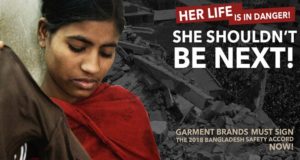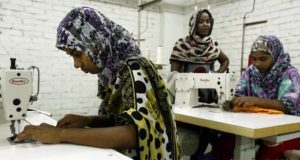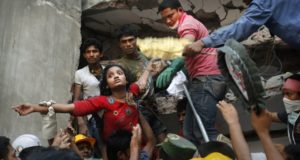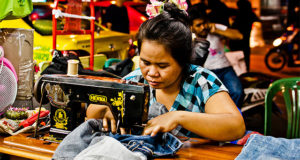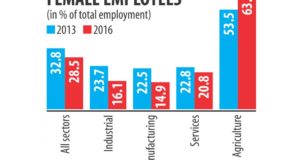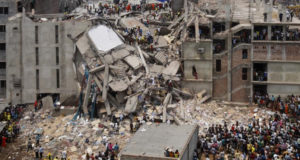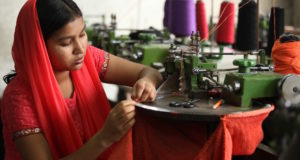Authors: Khondaker Golam Moazzem, Fahmida Khatun, Tamim Ahmed, Kithmina Hewage and Anjana Pathirana The COVID-19 pandemic has caused a major disruption to the global apparel value chain and has delayed its recovery in the medium term. Innovative strategies and tools ...
Read More »Post-Brexit trade deals could make the world’s poorest worse off
Among the many words that have been spent on the Brexit debate since Theresa May triggered Article 50 last year, one crops up time and time again: trade.
Read More »Labour signatories urge brands to sign onto 2018 Accord
After the collapse of Rana Plaza building housing five garment factories in April 2013, that claimed thousands of lives, the event shook the global conscience.
Read More »Unions hail deal to pay out for worker safety in Bangladesh
Unions at a global clothing brand hope its agreement to pay to meet fire and building safety regulations in 150 garment factories in Bangladesh could herald a new era.
Read More »How brands can outsource production without costing lives
In 2010 a spate of suicides at factories in southern China owned by Foxconn, a contract manufacturer for some of the world’s leading electronics brands, highlighted poor conditions faced by its assembly workers.
Read More »Fast fashion still threatening worker safety, UK study shows
On 24 November 2012, a fire in the Tazreen Fashions factory in Bangladesh led to the death of at least 112 workers, while the collapse of the Rana Plaza building just five months later killed 1,134 garment workers and injured hundreds of survivors.
Read More »Number of female employees in Bangladesh down by 13.10 percent
The number of female employees fell 13.10 percent to 5.07 million in Bangladesh last year compared to 2013 mainly because of closure of subcontracting businesses in the garment sector, according to a new survey.
Read More »The high cost of cheap clothes
On the morning of April 24, 2013, a poorly constructed eight-storey garment factory known as Rana Plaza collapsed in Dhaka, Bangladesh, killing more than 1,130 people in a crush of brittle concrete and rebar. It was the worst industrial disaster in the country’s history, but the toll didn’t end when the building fell. Many later died from injuries sustained in the collapse or were permanently physically disabled. Others developed PTSD or other mental health conditions from witnessing the event.
Read More »Bangladesh has high stakes in unsafe factories
As Bangladesh looks down the barrel of two humanitarian disasters beyond its control, its government and garment industry risks manufacturing a third. In August, once-in-a-century floods left one third of the country underwater, killing at least 145 people, displacing 300,000, and decimating swathes of Bangladesh’s agricultural heartland. As the water settles and recedes, aid workers say they desperately lackthe supplies needed to stave off disease.
Read More »Brands should take more control of supply chains to fix labour exploitation
Worker exploitation is rampant in the global fashion industry, according to countless investigations, studies and reports. So why haven’t fashion brands cleaned up their acts? Even if brands want to be part of the solution (as they are frequently asked to be) they are hindered by the current legal system. The problem is if brands are to eradicate labour exploitation, they must take more control of their supply chains. But if they take more control over their supply chains, they open themselves up to the risk of tremendous legal liability.
Read More » CPD RMG Study Stitching a better future for Bangladesh
CPD RMG Study Stitching a better future for Bangladesh


